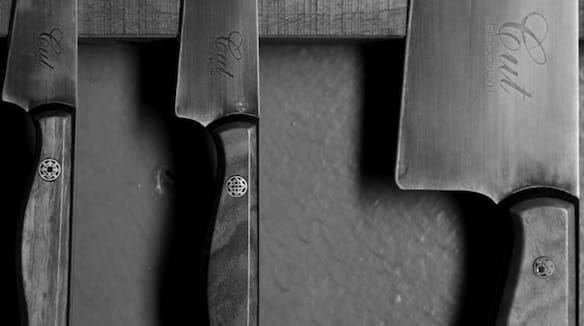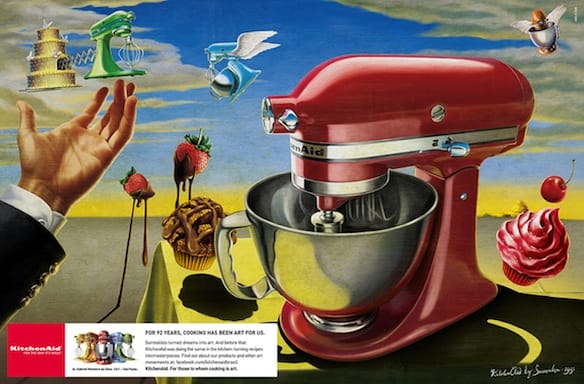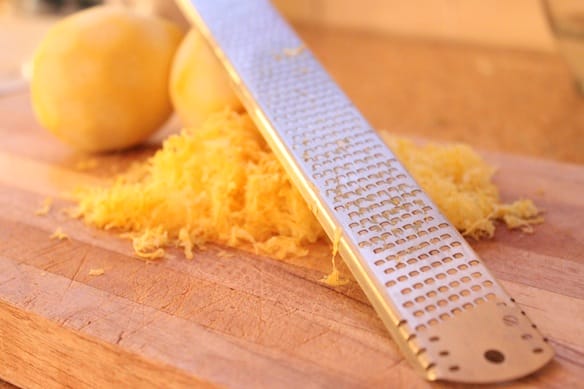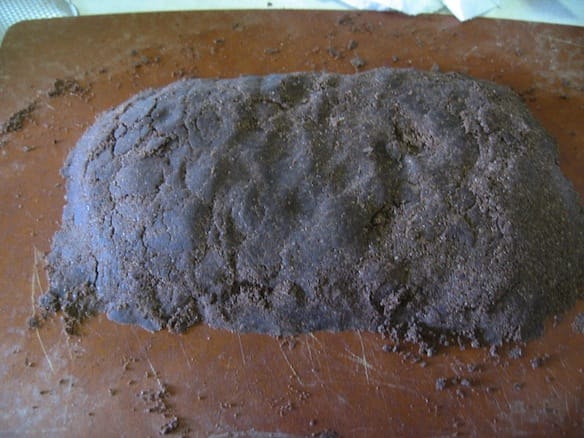This guest post is by Matt Maroon, CEO of Blue Frog Gaming and passionate foodie.
A couple weeks back I saw a post on Hacker News entitled Rice Cooker Hacks. Being both a foodie and a fan of the Priceonomics blog, I had to click through. What I found made me a little sad, as I lamented in this Hacker News comment that sparked a vigorous debate:
Posts like this take the unfortunate (and very American) view of food as fuel, an absolute necessity that you have to get out of the way as cheaply and efficiently as possible. Good food, in that view, is anything where the taste isn’t painful.
See, I’m a foodie and I’ve been one for a long time. Food to me isn’t something you just have to heat until it won’t make you sick anymore and cram down your gullet. To me, food is an essential part of the human experience. Sharing it creates tight bonds. Why else, when we think of a first date, or celebrating a birthday or an anniversary, do we immediately think of dinner at a nice restaurant?

Author juggling food and entrepreneurship. Actually, looks like it’s just food. We stand corrected.
Not everyone shares how I feel about food, but I believe people should learn that cooking is a lot more than heating something until it’s 213 degrees Fahrenheit then stopping. So when the guys at Priceonomics contacted me and asked if I’d be interested providing a counterpoint to the “food as fuel” trope, I jumped at the chance.
This post lays out the Minimum Viable Kitchen (MVK) for creating gourmet food. It’s aimed at the person that wants to make truly great food, but isn’t quite sure where to get started or how expensive the commitment will be. As it turns out, you can assemble all the kitchen equipment you need to become a great chef for under $1000. This post isn’t trying to convince you to become a great chef or a foodie, but if you are already so inclined, it will help you get started.
So, let’s begin by answering the question, how do you define a Minimum Viable Kitchen and then let’s lay out how you can go about building one.
Getting Started: Defining the MVK
I define the Minimum Viable Kitchen as one that can allow you to create over 75% of the recipes that are in what I consider to be the best cookbooks for home chefs. This goal can be achieved at a reasonable expense without spending thousands of dollars on long-tail, expensive equipment like immersion circulators and Pacojets.
People who know me would describe me as a passionate person. I tend to not do things halfway. When I wanted to learn to play poker, I read pretty much every book there was about it at the time and learned basic probability and statistics so I could get an edge at the table, and I meticulously tracked and measured my results. When I wanted to start a software company, I read every one of Paul Graham’s essays and applied to Y Combinator.
So a few years ago, when I decided that after a decade of being a foodie I wanted to learn to cook, I went about it in my usual way. First I read everything I could find from the world’s best chefs, which turns out to be not much. Most celebrity chefs are more celebrity than chef. A Rachel Ray recipe, for instance, isn’t worth the HTML it’s printed on. And most of the books you could find from the guys with a few Michelin Stars to their name were a disgrace to their reputations, probably written by ghost writers hastily transcribing a sous chef’s notes and converting grams to tablespoons.
There was only one exception and that was Thomas Keller. His book, the French Laundry Cookbook, had sparked a revolution in professional chef cookbooks. He’d written the book with the same love he puts into his food at the eponymous restaurant that is often called the best in the world. He wrote it not to cash in on his name but to pass down his knowledge to future generations of chefs, professional and amateur alike. It was about advancing a cause rather than making money, though I suspect it did plenty of both.
Around the time I’d begun cooking he’d put out what would be his most popular book, Ad Hoc at Home. Ad Hoc is a bit more approachable than The French Laundry, with recipes being more familiar to the average American, and many of them easier and faster to make. They’re still made with the same care and focus on perfection. But people are just less intimidated by “Buttermilk Fried Chicken” than they are Baby Lamb: Five Cuts Served with Provencal Vegetables, Braised Cippolini Onions, and Thyme Oil.

Image credit: The Cork Board.
And best of all, Ad Hoc at Home doesn’t just tell you what to do, it often tells you why you do it. So here we have our first expense, the Ad Hoc at Home cookbook: $27. Also, if we’re really learning to cook, we’re going to want The Professional Chef ($40) which is the guidebook used by the Culinary Institute of America, which is the best cooking school in the country. It’s a great way to find out why that thing you just messed up didn’t come out right.
Ad Hoc at Home: $27
The Professional Chef: $40
Cookbooks total: $67
Now, if you want to be able to cook most of the recipes in these two excellent books, what do you need to buy and how much will it cost you?
Knives

Image credit: Animal.
Many types of cookware are what Scott Adams would call a confusopoly. Customers know so little about what they’re purchasing that their decisions are based more on branding or a salesman’s tactics than quality or price. Nowhere is that more the case than knives, where people routinely spend hundreds or even thousands for mediocre products.
When you walk into your local kitchen store, you’ll see a dizzying array of cutlery. You’ll see all sorts of brands, styles, shapes, and sizes, designed to cut various things and costing up to thousands of dollars for a 10 piece set. The good news is we can safely save almost all of that money for the appliances.
In reality you will do 90% of your cutting with one knife. I like a chef’s knife (10” or bigger) but some people swear by a Santoku. Whatever floats your boat works here; all you need is one that gets sharp and stays sharp.
These don’t have to be expensive either, in fact most of the brands people can name aren’t very good. If you want to shell out the big bucks (~$250) for a Shun Ken Onion I can’t say I blame you. They’re beautiful and feel great in your hand, and nobody makes a better blade. But this $26 Fibrox by Victorinox is just as sharp and holds a good edge. I use it as my daily driver, and though I’m not in love with the cheap-feeling plastic handle, it is one of the few kitchen items I do feel comfortable putting in my dishwasher because it’s both durable and inexpensive to replace. You could invest the money for a Shun Ken Onion in the stock market and buy a new Fibrox every year with the earnings.
The second most frequently used knife in your roll will be the paring knife. Again, Victorinox makes a fantastic one for $8. A bread knife is a nice-to-have too, and costs about the same as a chef’s knife, but not strictly necessary.
You also need a honing steel, as you’ll be honing your knife before each use. To the best of my knowledge one is pretty much the same as the other, so let’s get a cheap one for $10 on Amazon.
Now you need something to cut on. Professional chefs will tell you to get a big wooden butcher block, and don’t get me wrong, I love mine. They’re a joy because they have a little grip to them and keep your knife from sliding from side to side. They keep your knives sharper. And they’re heavy so they don’t slide on your counter. But they’re both expensive and a pain in the ass. You shouldn’t cut raw pork or poultry on them (necessitating a plastic board of some kind anyway). They absorb smells. They warp if you get them wet. You have to sanitize them with bleach or vinegar and coat them with oil periodically. And they cost 20 times as much as a knife sharpener and 8 times as much as the knife, so who cares if they dull your blade a bit?
My recommendation is, if you’re on a budget, just get a decent plastic board. OXO makes this great one for $25. If the budget isn’t too tight, get a couple of them so you don’t have to wash one in between cutting chicken and vegetables (you’ve got enough going on the first time you try to make something from Ad Hoc, trust me) but that’s not strictly necessary so I’m not going to add it to our total.
I’m also going to toss in a knife sharpener. They’re $9, which is less than you’d spend just shipping your knives to be professionally sharpened, and help you keep a sharp edge.
So our expenses for knives and cutting surfaces:
Chef’s knife: $26
Paring knife: $8
Honing Steel: $10
Cutting Board: $25
Sharpener: $9
Cutlery total: $78
Pots and Pans

Image credit: Everyday Occasions.
Pots and pans are confusing too, but I’d have to say that on the whole “you get what you pay for” is at least more applicable than with knives.
So what do you want in a pan? The main thing is you want it to heat evenly. The pan transfers heat from your burner to your food via conduction, and a cheap one will have hot spots, meaning your food will be cooked more in the middle than on the outside. You also want the handle to be tightly attached and the whole unit well-weighted and hefty so it doesn’t wobble as you’re carrying around hot stuff. My general rule on cookware is that if you don’t feel like you could bludgeon someone with it, it’s not good enough. Also if there’s a lid, you’d like that to fit snugly.
What you don’t want, in general, are non-stick pans. You can’t put them over high heat. You can’t get a nice fond for deglazing. And if you’re having problems with stuff sticking to your pans, it’s because you’re doing it wrong, not because you need a Teflon coating. And with plain old stainless steel there’s no toxic chemical coating to rub off into your food.
So we need a few pieces of stainless steel. Overall I’d recommend just getting a decent 10 piece set. They’ve got everything you need and you get a significant discount for buying the group. If there’s one brand that consistently wins in just about every test, it’s All-Clad. The prices reflect their reputation, so I won’t disown you if you just get a cheap set from Costco or World Market instead, but if you’re going to splurge one place, do it here. The All-Clad D5s are probably the best cookware set on the market at about $900. This is a budget exercise though, and Amazon has some decently-rated options in the $150 range, so I’m going to assume you bought that.
The next item is the Dutch oven. A Dutch oven is a true kitchen workhorse. It’s my go to cookware. It’s great for braising. It’s great for making sauces. It can do anything a large saucepan or a small stockpot can. I’m even making a loaf of bread in one as I write this because it’s got a very heavy lid that traps steam in.
You want an enameled cast iron one. While Le Creuset has long been everyone’s favorite, in recent years many far cheaper models have been getting equivalently good reviews. My baby is this $80 Lodge that my dad got me a few years back, I think from Target. Lodge makes lots of great cast iron products at low prices. And even though it’s a quarter of the price of a Le Creuset, Lodge’s lid knob won’t melt at high temperatures like Le Creuset’s default one will.
You’ll also want a baking sheet. You’ll use this a lot, and often not even for baking. Put a rack in it and you can cool some meat without getting juices all over your counter. Freeze some fruit puree and sugar and you can make a granita in one too.
You’ll want a size called a half sheet pan (or a jelly roll pan) preferably made out of aluminum. Again, avoid non-stick. With a roll of parchment paper (or a Silpat) you can make any pan non-stick without all of the drawbacks. Nordic Ware makes a popular model for $14.50. The half sheet is about 13”x18”, and is big enough to bake almost anything on.
So total costs for cookware are:
Pots & Pans: $150
Dutch Oven: $80
Half Sheet Pan: $15
Cookware Total: $245
Electrics

Image credit: I Believe in Adv.
Now we’re at the part every tech geek came to read. Kitchen appliances are probably the only thing we can do our Tim “The Toolman” Taylor grunts when talking about. I love my pans, but I don’t get the same manly feeling from talking about their heat conduction that I do about the electrics.
Take our most important small appliance, blenders, for instance. Vitamix is the undisputed king in professional kitchens. Mine has a 2 horsepower motor, which I’m pretty sure is more powerful than the car I drove in high school. The blades rotate at over 240 mph and I fully believe that sucker could turn rocks into soup. To illustrate how much I love it, it’s the only thing in my kitchen I gave a proper name to. Me and Veronica Vitamix just made a mean potato leek soup yesterday in fact.
But we’re on a budget here, and you probably didn’t take a seasonal job at Williams-Sonoma just to get the discount like I did (work 15 hours a year to get 40% off? Sign me up!) so what to get? Cook’s Illustrated recommends the Ninja. It’s under $100, and does a better job than a lot of the blenders that are more expensive. Your soups won’t have the same creamy consistency and your margaritas might be a little chunkier than you’d like, but you’ve saved some pretty big bucks doing it and the important thing is you got a blender. It will be your most used appliance in the kitchen and for most things it will get the job done. You’ll have to strain a little extra, but for $500 savings you might not mind.
Your runner up for MVP in the electrics category is the stand mixer. You don’t strictly need a stand mixer. You can do many things with a handheld ($50) or by hand, but if you value your time, you’ll get one. You’ll find you use it much more frequently than the hand mixers, and the first time you let the Kitchenaid knead bread dough for 20 minutes instead of doing it yourself any buyer’s remorse you may have had will fade away.
KitchenAid has long been the gold standard in stand mixers, and still wins most hearts. You can get the Classic Plus for about $230, and I’m going to throw that into the total, just because the number of dishes in cookbooks I see that specifically say to use a stand mixer. This might be an item to pick up used (hmm, wonder if there are any startups that would tell you what something like this should cost?) since well-treated they’ll last forever.
They’re also the kitchen equivalent of a smartphone thanks to their accessories. Want to grind meat? There’s an attachment for that. Want to extrude pasta, make ice cream or stuff sausage? There’s an attachment for that.
Slow cookers and, dare I say it, rice cookers, are not necessary. They’re nice, don’t get me wrong, but there’s nothing you can do in one that you can’t do in something we’ve already purchased. I think I’ve seen one recipe in my cookbooks call for a slow cooker (and it had alternate directions for stovetop) and zero call for a rice maker (though a number call for cooked rice) so I’m not going to include them.
So for the small appliances, our totals are:
Blender: $100
Stand Mixer: $230
Electrics Total: $330
Cook’s Tools

Image credit: Baking Family.
Now we’re in the most bewildering section of the store. There are hundreds of items all crammed together and most of them look pretty similar. If you don’t know what you’re doing you can easily get lost in a sea of avocado slicers and salad spinners. The good news is we only need a dozen or so things here.
First we need a scale. Professional chefs measure many things by weight rather than volume since ingredient density can vary. We want one that can handle a little weight, has a big area on which to hold stuff, and is easy to clean. This is the most expensive cook’s tool you’ll buy, but it still isn’t very pricey. You also want it to measure in both grams and ounces since you’ll see some of both, but they pretty much all do that. And of course you want it to be accurate to a fraction of a gram (or ounce) but again, most are.
Salter scales are very popular. A decent unit costs only $39.95. They’re also useful for postage too!
Microplane makes by far the best graters, but stay away from the Home series. They have cheap plastic around the outside that falls apart very quickly. The Elite line exclusive to Williams-Sonoma has a much better hard rubber lining and only costs $16.95. Grab the fine grater for parmesan and zesting citrus, both of which you’ll do reasonably often. Bonus points for a course one too.
Next up we need a fine mesh strainer. One thing that shocked me at first about professional cooking is the amount of straining. Before I got the good cookbooks I’m ashamed to admit I only owned the same colander you’d probably use for draining spaghetti. Now I find myself straining all the time.
OXO makes a decent one for $22.99. Really any fine mesh strainer is ok. You can always put a dampened cheesecloth in it for even more straining power.
Instant read thermometers are something you’ll use quite often. They tell you when your food is done without cutting it open and letting all of the juices out. The gold standard here is the Thermapen, but at $90 it’s out of our price range, so let’s just get a decently-reviewed one on Amazon for $10. You can always ask the in-laws for the Thermapen for Christmas.
Thomas Keller says that one of the first techniques you’ll want to learn is making a pie crust, and that necessitates a rolling pin. Though we all have that image of the contraption with handles that old cartoon ladies chase their husbands around with, the best ones are just a big cylinder of wood, preferably maple. Here’s a great one for $12.20. Some people prefer the French style, which is tapered at the ends and will run you about the same price.
Another bewildering item that is a total necessity is the mixing bowl. You’ll see all sorts of sizes, with all sorts of designs and made out of all sorts of materials. Some are plastic. Some are melamine. Some are stainless steel, and some of those have rubber bottoms. Some have lids and some don’t.
I like bowls that are 100% stainless steel, no rubber on the bottom. The reason is I often find myself cooling things in an ice bath, and there’s no better way to do that than in a plain old steel mixing bowl. The rubber you find on the bottom of most hampers heat conduction, and melamine doesn’t conduct well at all. Also the all steel ones won’t melt if they come into contact with a burner, which I promise you will happen eventually. The good news is these are cheap too. Here’s a great set of three for $31.
Spatulas are an absolute necessity, and there are dozens of them in every cookware store. My advice on these sorts of tools is get silicone. It’s far more heat resistant than plastic, meaning it won’t melt if it touches a burner or a really hot pan. They’re cheap too; you can find these online or in any cookware store for about $8.
Wooden spoons are indispensable in your kitchen. They’re what you use for stirring, deglazing, etc. You’ll use one nearly every time you cook. Ideally you want a flat-edged one (often called a turner) because they’re so much more efficient at scraping the bottom of the pan. These are also dirt cheap. I got a great one on Amazon for $6.
Tongs are pretty handy when you’re doing something like browning meat. Beware though, a lot of tongs have sharper edges that can cut the meat and let the juices out. Get ones with soft edges, like these silicone gripper tongs for $11.43.
We also need a whisk because a huge percentage of our recipes involve whisking something into something else. This OXO one is fantastic and only $9.99.
You’ll want a vegetable peeler too. The Kuhn Rikon Y-Peeler is a popular model and you get one for $4.
Last, but not least, we need a cooling rack. Often you want to let food cool while dripping dry or having air pass underneath. It’s fairly cheap at $9.26 and is small enough to fit inside of your half sheet pan. And so, for the cook’s tools:
Scale: $40
Grater: $17
Strainer: $23
Thermometer: $10
Rolling Pin: $12
Mixing Bowls: $31
Spatula: $8
Wooden Spoon: $6
Tongs: $12
Whisk: $10
Cooling Rack: $10
Peeler: $4
Cook’s tools total: $183
Desserts
The last section in every cookbook is desserts. I’m not a big sweets fan, and baking is my Achilles heel, but even still I do find myself making many of them.

Author trying to make a chocolate cookie but using baking power instead of baking soda. Achilles heel indeed!.
Thankfully there are really only a couple things you need. First off, most desserts sections (especially in Thomas Keller books) have a good chunk of frozen ones. Ice creams, sorbets, etc. For those you need an ice cream maker. I’ve had a couple Cuisinart models over the years and they’ve always worked well. The cheap one is $48, and more than good enough. The more expensive models really just have bigger canisters allowing you to make more at once. I find Woot quite often has refurbs for only about $35, but we want our MVK today!
You already have a baking sheet, so now we just need two rather cheap items, a pie pan and a cake pan. These probably are ok to buy non-stick. Or ceramic. Or steel. Whatever you like. They’re about $10 each. That concludes our desert section:
Ice Cream Maker: $48
Pie Pan: $10
Cake Pan: $10
Total: $68
Conclusion

The author’s crawfish boil. A good time had by all (except the crawfish)!
So our totals for all sections are:
Cookbooks: $67
Cutlery: $78
Cookware: $245
Electrics: $330
Cook’s Tools: $183
Desserts: $68
Grand Total: $971
So there we are. We’ve outfitted an entire kitchen for just under $1,000 total. With the exception of the pots and pans, the blender, and maybe the wooden spoon, most of these things will last you decades too. They won’t make you Daniel Boloud any more than a $300 driver will make you Tiger Woods, but they are sufficient to make great food. If you want to become a great cook, buy the two books I suggested and start cooking.
Cooking matters to me and I think it should matter to more people. When you create great food yourself, you learn. You’ll know what good food tastes like, where it comes from, and how it’s made. You’ll view food for what it can be, rather than just something that keeps you from feeling hunger. And when the waiter at a restaurant tells you the special is a braised short rib with creamy polenta, you’ll truly understand and appreciate what that means.
Priceonomics is hiring a writer!
Thanks Matt for the awesome guest post! Get the latest from Priceonomics on Facebook or Twitter.



